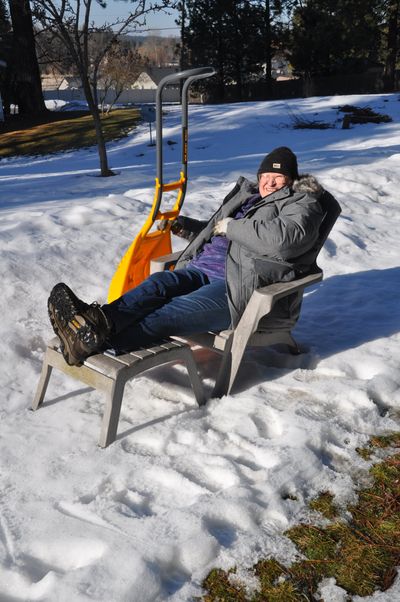Gardening: Eagerly anticipating more sunshine

What a treat! Last Thursday when I woke up, there was this strange, warm brightness hitting my face. At first in my sleepiness, I couldn’t figure out what it was. It certainly wasn’t the cat snuggling in.
Then I realized it was the long-lost sun. The sun, that had gone MIA around the first of the year, was back after nearly four weeks of thick clouds and fog. Yes! That was worth getting up and about for.
I’m sure many of you felt the same way. A sunny day in midwinter can certainly make all of life better even if its for only a short time. The medical profession recognizes this as seasonal affective disorder or SAD. As the sun begins its decline to the south in the fall and the days get shorter, we receive less sun. As we do, 1 in 20 people begin to feel less energetic, sluggish and more depressed and thus can be said to be affected by SAD. One of the suggested treatments for the condition is to sit in the light of a special lamp for a prescribed time. The condition begins to disappear as we move into spring.
I have always had landmarks of light to get me through the winter. First is the countdown to the winter solstice. Being an avid weather observer, every morning I check the forecast for the next 10 days which includes noting the minute-by-minute decline in the day length. Starting in mid-July, the seconds turn into a minute, then two and ending around Dec. 7 at 3 minutes, 26 seconds. After the solstice, the process reverses until the summer solstice.
Other timeline checks are the countdowns to being able to see the light increase. For me, the first check is when the sun sets at 4:30 p.m., then 5 p.m. which will be on Monday. Then will come the switch to daylight savings time on March 13 this year. By that time, I almost have enough time to go out in the garden and start a small project or make up a project just to be doing something outside. That might be something as simple as setting out my mason bee colonies. This year, because I just retired from my day job with Washington State University, I will have to get used to not jamming my early spring garden time into the last bits of daylight after a day of work. That is going to be a weird feeling.
Tips of the week: If the snow has melted out of your yard and the soil has thawed a bit, start looking for cold tolerant weeds like chickweed, annual bluegrass and bittercress (aka shotweed). They thrive in the early spring temperatures.
If you are considering setting up a mason bee colony, now is the time to order your bees and supplies. They need to be out by mid-to-late March.
Lastly, take the time to get outside on any sunny day we are gifted and soak up the warmth.
Correspondent Pat Munts can be reached at pat@inlandnwgardening.com.